Höglund lab: Our research
Are emerging infectious disease and climate change threats to high-latitude amphibians?
Together with Anssi Laurila, Uppsala and Jonas Waldenström, Linnaeus University and funded by Formas.
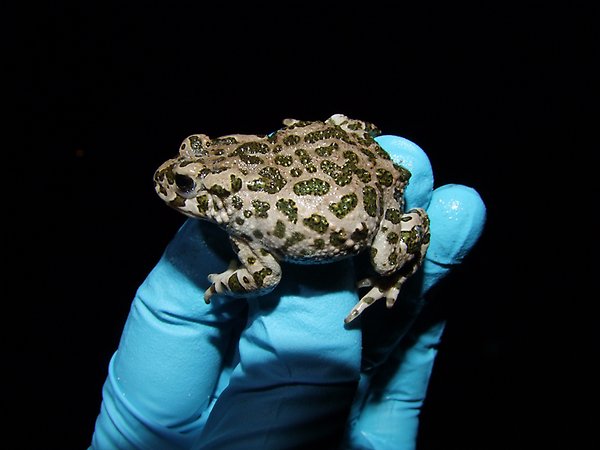
Amphibians constitute an important part of the Swedish fauna and a reduction in numbers has serious consequences for wetlands and ecosystems. Research on the factors affecting amphibian diseases is therefore crucial for managing these environments, and goes hand in hand with the government's environmental quality objectives of a rich plant and wildlife, living lakes and streams and thriving wetlands.
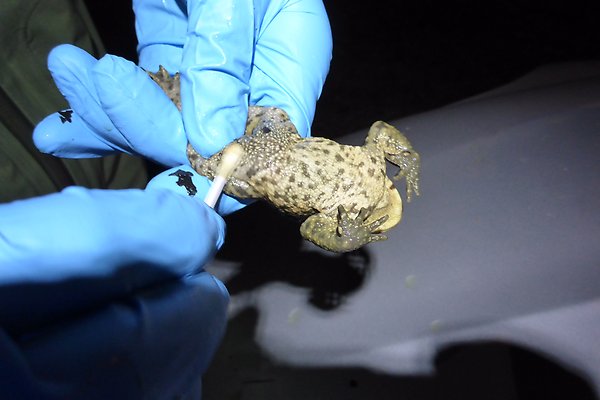
A lethal fungal pathogen Batrachochytrium dendrobatidis (Bd) has caused extinction of over 100 species of amphibians globally. Our studies have shown that it is lethal also to Swedish amphibians. However we do not know why some species and populations are more sensitive than others. In the project we study two rare species: green toad and fire-bellied toad, as well as two common species: common toad and moor frog. The purpose is to study the presence of Bd in different species and study i) intra-specific differences in resistance and how this relates to elevated temperatures due to global warming effects, ii) differences in gene expression of experimentally infected individuals from southern and northern Sweden in the common toad, and iii) species specific genetic adaptations linked to resistance.
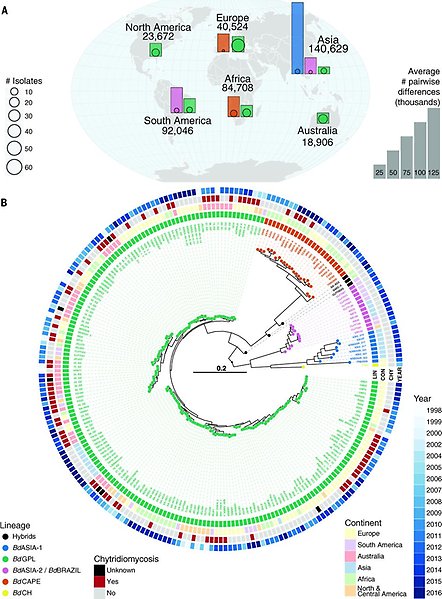
Coworkers:
Niki Chondrelli, PhD student
Gunilla Engström, research engineer
Anders Forssgren, research assistent
Alumni:
Simon Kärvemo, post-doc
Maria Cortazar-Chinarro, PhD student
Sara Meurling, PhD student
David Åhlén, mastersstudent
Marie Svensson, mastersstudent
Laurens Schroyens, mastersstudent
Lucas Bolender, mastersstudent
Filip Thörn, mastersstudent
Hugo Pajelowski, mastersstudent
Genomic signals of climate driven population trends in arctic bird species
Together with Kristinn P. Magnusson Aukureyri, och David Hazlerig, Tromsö. Funded by the Swedish Research Council VR
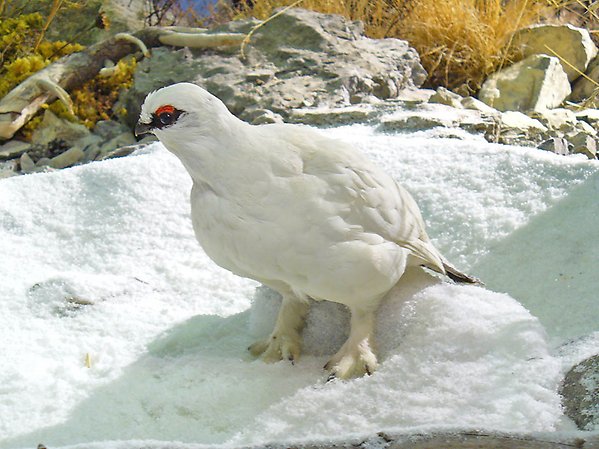
We study to what extent three grouse species, ptarmigan Lagopus muta, willow grouse L. lagopus lagopus and its subspecies L. l. scotica, have been impacted by climate change at the genomic level and project the fate of local populations in face of global climate change models. These species are ideally suited for this project, being sedentary bird species adapted to arctic and subarctic environments. Such environments have had the greatest impact from global climatic change and are projected to be the most affected in the future.
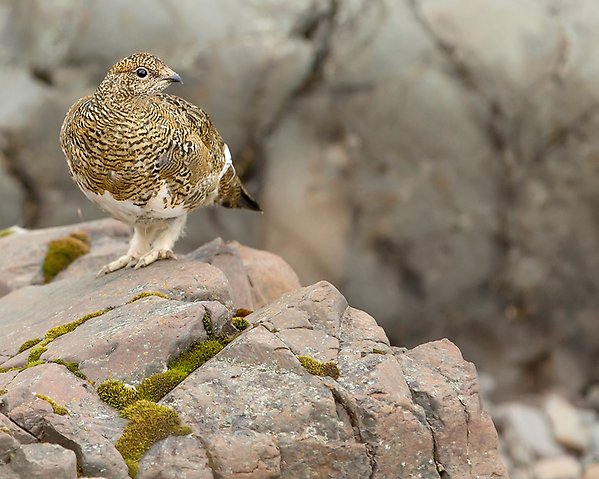
Photo: Niclas Ahlberg
Furthermore, the study species show differences in their specialization to cope with extreme arctic environments. Ptarmigan have a circumpolar distribution at extreme northern latitudes or high altitudes in mountain areas, while willow/red grouse are found in more subarctic conditions. Both species are found in the same taxononomic family (Phasianidae) as the genome-model bird species: the chicken/red jungle fowl Gallus gallus. Since chromosomal structure is strongly conserved across birds, karyotype and synteny is similar.
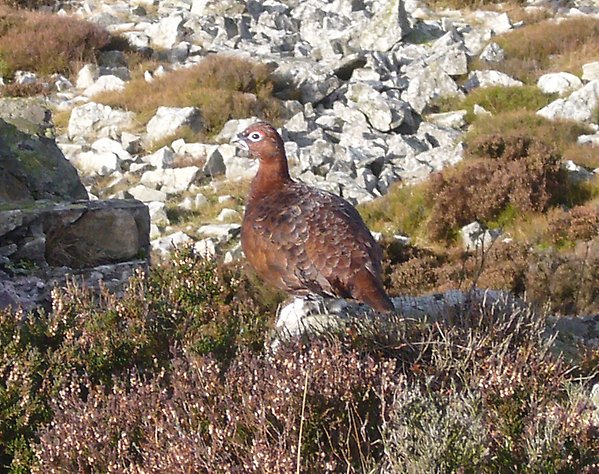
Thus, we can exploit the extensive genomic resources of the chicken for making inferences and identifying the genes involved in genomic adaption in these closely related grouse species. Furthermore, the species’ contrasting habitat requirements and documented genetic structure allows for general insights in to how species may cope with global warming in the Arctic. We study similar questions in hazel grouse and the endemic Chinese grouse in collaboration with researchers from the Chinese Academy of Sciences in Beijing, Prof. Sun Yue-hua.
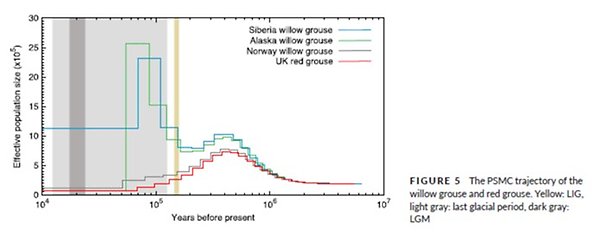
Medarbetare
Patrik Rödin-Mörch, post-doc
Alumni
Yvonne Meyer-Lucht, post-doc
Peter Klinga, post-doc
Rado Kozma, doktorand
Kai Song, doktorand
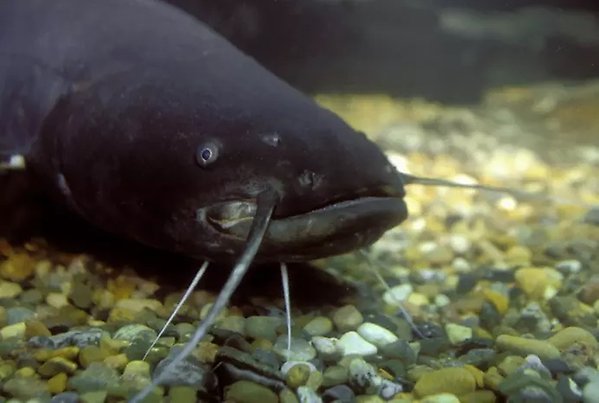
The Wels Catfish is native to eastern and central Europe, with a small population in Sweden, where it is listed as vulnerable. The Swedish population is a relict from the Ancylus Lake, i.e. when the Baltic Sea was a fresh water lake, cut off from the Atlantic Ocean, approximately 8000 years ago. As the Baltic Sea regained contact with the oceans and salinity levels increased, the Swedish Catfish became restricted to surrounding freshwater systems. Historically, the species was abundant throughout southern Sweden, but primarily anthropogenic land use interventions has caused the habitat to become increasingly fragmented, and the Catfish has decreased. Today, it is only present in three water systems – lake Båven in Sörmland and the river system of Emån and lake Möckeln (including downstream river system Helge å) in Småland, respectively.
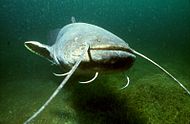
These three populations are believed to have been isolated for a substantial amount of time, and may therefore have been differentiated by genetic drift and/or local adaptations. Each population is small, with effective population sizes in the range of 10-20, making them vulnerable to low genetic variance and inbreeding problems. The Swedish population have been subject to conservation measures over the last decades, and current management plans include ex-situ breeding programmes as well as translocations of individuals. When managing populations through reintroductions and/or translocation, it is of vital importance to gain as much understanding as possible about the genetic status and origin of the managed populations. Therefore, we sequence whole genomes at low coverage to obtain estimates of genetic structure and inbreeding levels of the three Swedish subpopulations of the species in order to evaluate current conservation status, and make suggestions for future management.
Coworkers
Pär Larsson, professor Linneaus University, Kalmar
Mette Lillie, researcher (mainly in another project)
Axel Jensen, PhD student (mainly in another project)
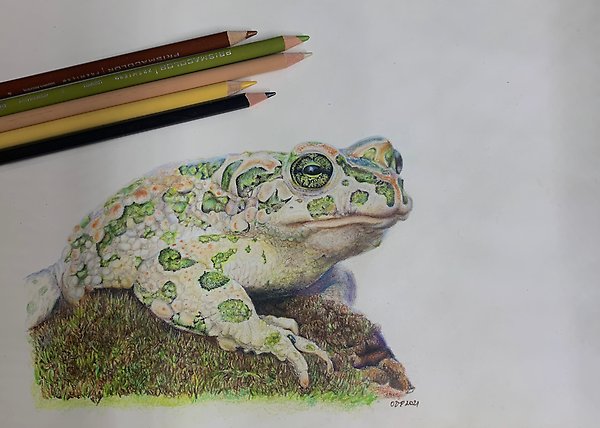
Illustrated by Olga Vinnere Pettersson
The green toad is Sweden's most endangered amphibian. The species previously had a larger distribution in southern Sweden but is today limited to a few localities in Skåne and Blekinge. Attempts are also underway to reintroduce the species to Öland. For this purpose, larvae are bred in a population kept at Nordens Ark in Bohuslän. Our research and part in the conservation work aims to document genomic diversity, population structure and degree of inbreeding in Swedish and nearby populations in our neighboring countries. The research takes place in collaboration with the Swedish action program for the species, which is led by the County Administrative Board of Skåne. In this context, the entire toad's genome is also sequenced in collaboration with NGI, SciLifeLab.
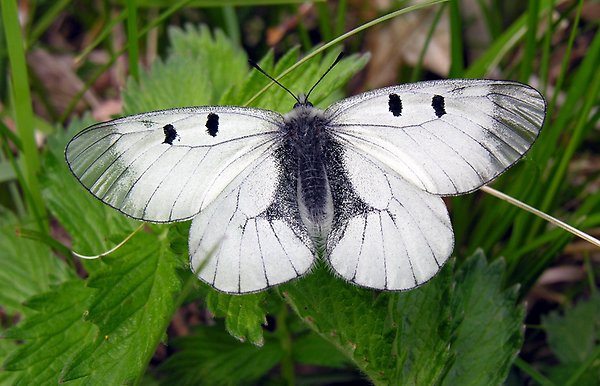
The Clouded Apollo butterfly is one of Sweden's most endangered butterflies. The species previously had a larger distribution but is today limited to a few localities in Blekinge, Uppland and Västernorrland. Experiments are underway with support releases in some populations with butterflies bred in captivity. For this purpose, butterflies from a population kept at Nordens Ark in Bohuslän are used. Our research and our part of the conservation work aims to document genomic diversity, population structure and degree of inbreeding in Swedish and nearby populations in our neighboring countries. The research takes place in collaboration with the Swedish action program for the species, which is led by the County Administrative Board in Blekinge. In this context, the entire butterfly's genome is also sequenced in collaboration with NGI, SciLifeLab.
